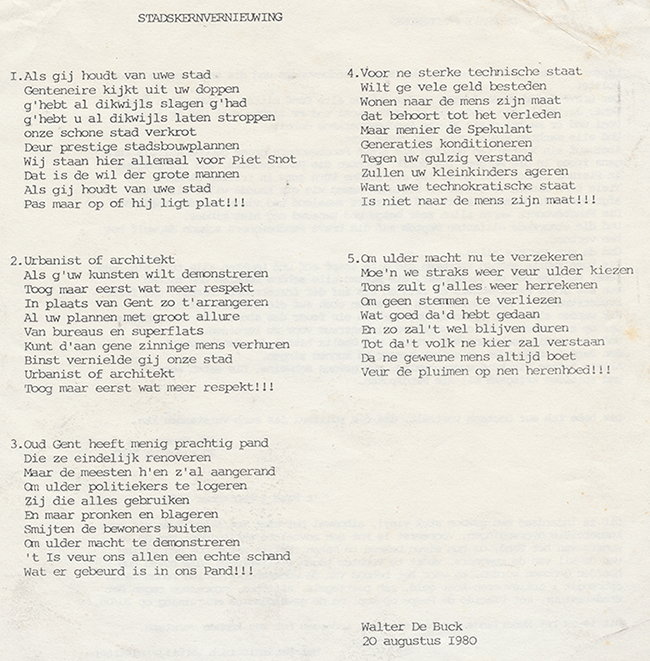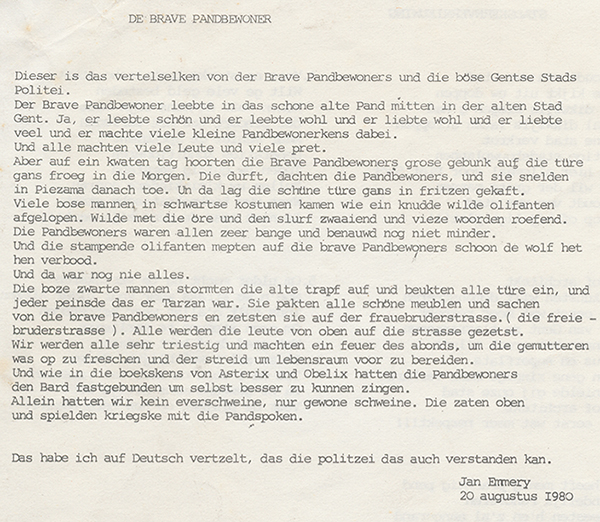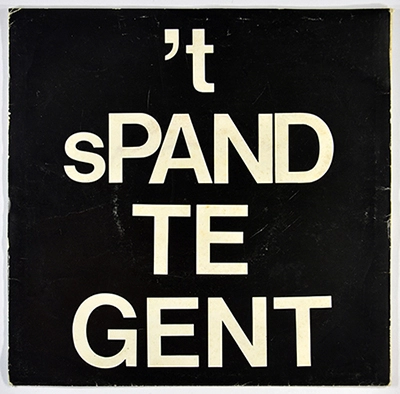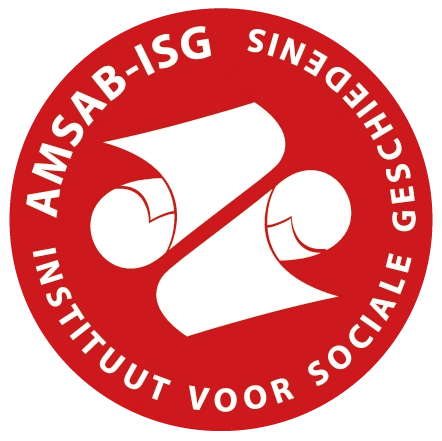Het Patershol in Gent werd gedomineerd door het voormalig klooster van de geschoeide karmelieten. Sommige delen waren in zeer slechte toestand, maar rond één van de twee pandhoven had zich een bewonersgroep ontwikkeld die een typische doorsnede bood van de samenstelling van de bevolking in het Patershol. Voor nogal wat politici waren buurten als het Patershol een doorn in het oog, ze droomden van een stad waar de verloederde historische buurten een nieuw elan zouden krijgen. Voor het Pand betekende dit een grondige restauratie waarvoor de bewoners moesten wijken. Vage beloftes over het behoud van de woonfunctie botsten op argwaan: als een buurt door een proces van gentrificatie gaat, zijn de oorspronkelijke, weinig bemiddelde bewoners altijd de pineut.
In 1979 richtten de bewoners het Pandinistisch Verblijvingsfront (PVF) op, naar analogie met het Sandinistisch Bevrijdingsfront uit Nicaragua dat de lokale dictator uiteindelijk had klein gekregen. Het PVF kwam met alternatieve voorstellen, legde contacten met actiegroepen rond stadskernvernieuwing in andere steden, stak zelf de handen uit de mouwen voor onderhoudswerken en probeerde op creatieve wijze de publieke opinie te mobiliseren voor de goede zaak. Een picknick op de Gentse bloemenmarkt, open Panddagen, een eigen radio en krant, kunstenaars zoals Roger Raveel en Kamagurka die in het Pand werken aanbrachten op de muren.
Toch bleef ontruiming een concrete dreiging: eind juli 1980 kregen de bewoners een uitwijzingsbevel. In de ochtend van 20 augustus 1980 viel een vijftig man sterke politiemacht het Pand binnen. Die avond verzamelden Pandbewoners op het binnenplein. Eén van hen, Jan Emmery, wist de stemming precies te vatten in het zelf geschreven lied De brave Pandbewoner dat hij die trieste avond meerdere keren ten gehore bracht.


Het PVF bracht De brave Pandbewoner later uit op single, met op de B-kant een nummer van Walter De Buck over stadskernvernieuwing. De single, met de titel ' t SPAND TE GENT was ook te koop, zowel om solidariteit te vragen als om de oorlogskas te spijzen.
Lees het artikel van Stijn Oosterlynck in Brood&Rozen 2010/3








